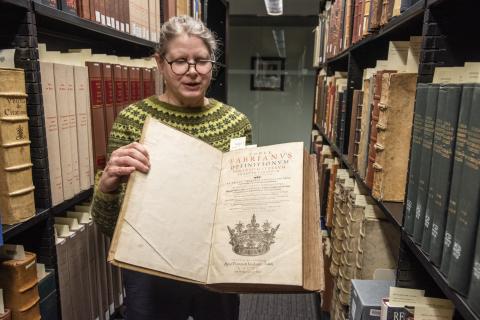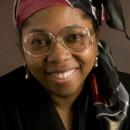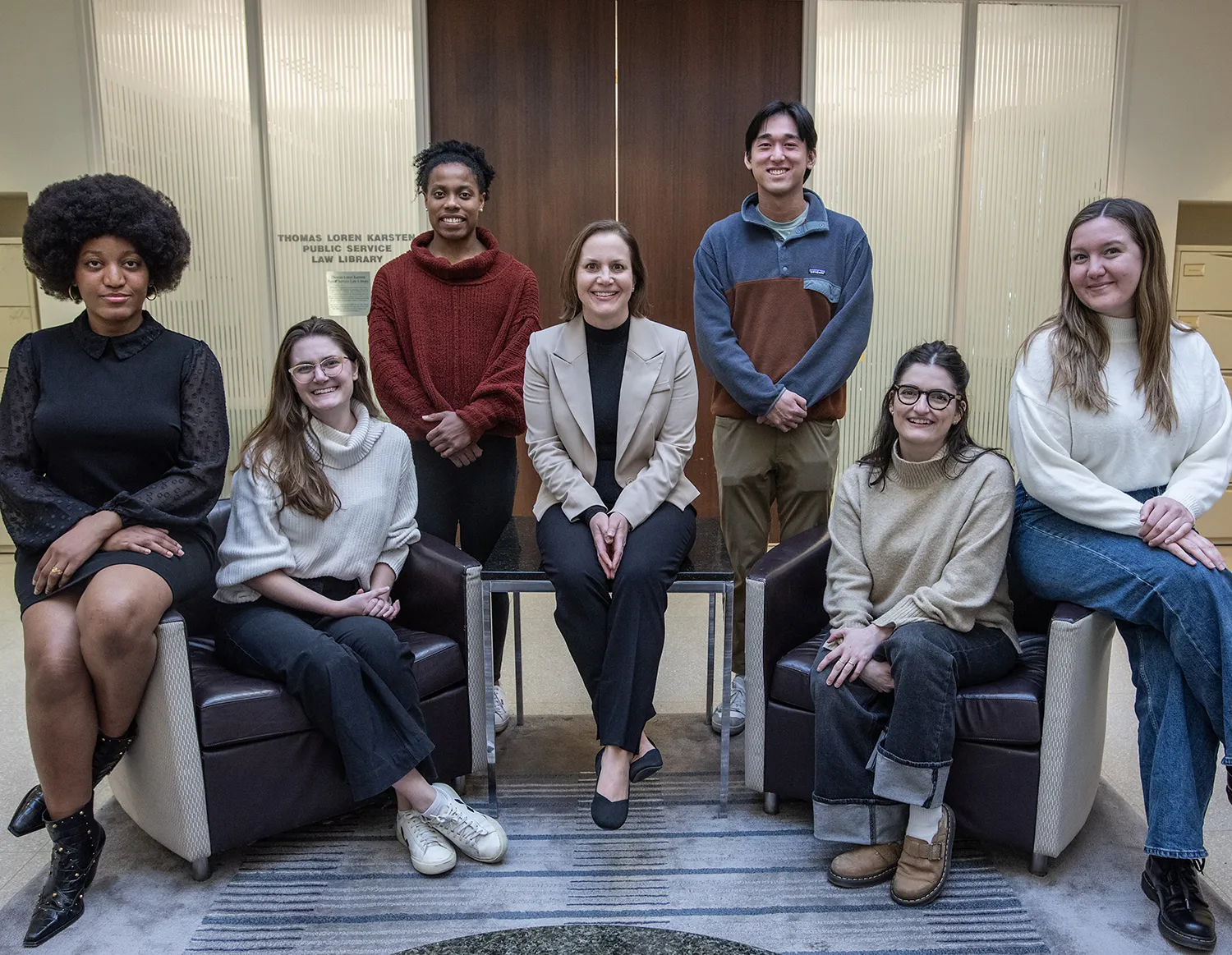A Glimpse into the D’Angelo Law Library Rare Book Collection
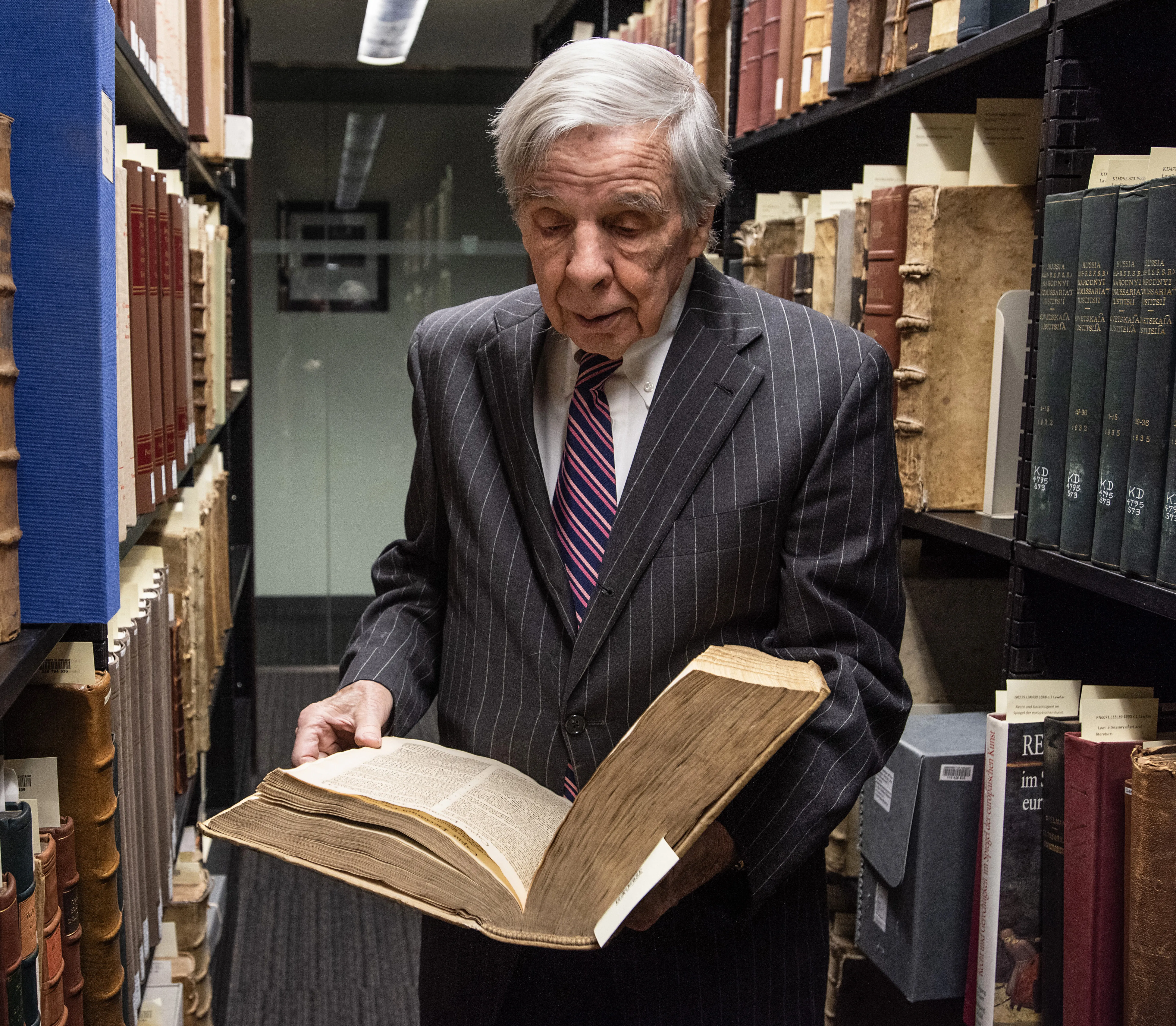
Tucked away on the sixth floor of the D’Angelo Law Library are two key-protected rooms enclosed in glass, holding some of the rarest books in legal history.
In an age where digitization makes so much content available to anyone with an internet connection, the idea of spending time and energy preserving old texts might seem archaic, but rare books still matter, say those who work most closely with the collection.
“One of the things about rare books that I find interesting is this idea that there is this physicality of the item as it was originally used,” said Julie Stauffer, the law library’s associate director for collection services. “Yes, we could rebind this and, you know, have nice little nameplates on it and make it pretty, but it then loses some of the character of the original item. And so where we can, we like to preserve the piece intact so that we carry that history forward.”
Her colleague, Foreign and International Law Librarian Lyonette Louis-Jacques, who has a special interest in illustrated books, is equally passionate about the content of the books.
“I’m hoping people would understand the law better if they used some of our rare, illustrated law books,” she said.
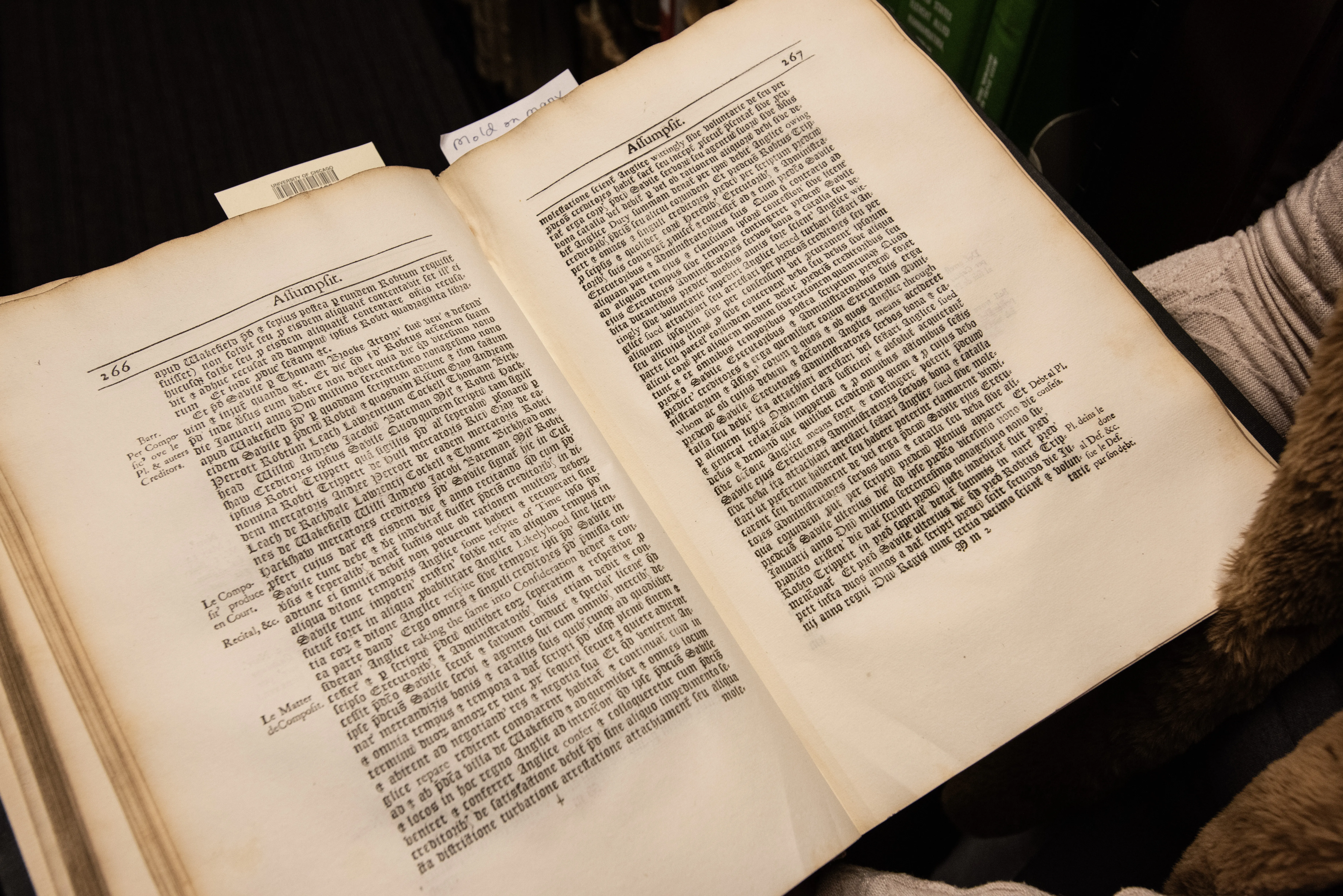
“I’m hoping people would understand the law better if they used some of our rare, illustrated law books." Lyonette Louis-Jacques, law librarian
Rare books have always been part of the Law School. The collection has lived in three different spots over the years. In the mid-2000s, the space dedicated to this purpose quadrupled when a library renovation landed it on the sixth floor in two separate rooms. One, the Louis H. Silver Special Collections Room, is named for a 1928 graduate who spent his earnings as an engineer, lawyer, and hotel owner collecting rare tomes. The two spaces house nearly three thousand items primarily books, but also more unusual items including legal memorabilia.
The oldest books in the collection date back to the early 1500s. “I don’t have the impression that we’ve made any special efforts to get something which is the rarest book or the most expensive book that we could possibly buy,” said Richard H. Helmholz, the Ruth Wyatt Rosenson Distinguished Service Professor Emeritus of Law, who has been a champion of the Rare Book Room over the last several decades. “What we’ve done is to try to fill out the gaps that are useful for a legal historian like me to consult, and I think we’ve done a good job on that score.”
Some rare books get designated as such just by sticking around for long enough. At the Law School, being published before 1800 for primary legal materials or before 1865 for secondary materials is what it takes to win a spot.
“We have a fair number of books in our rare book collection that have aged into becoming rare,” said Sheri Lewis, director of the D’Angelo Law Library. “We started out with some books in 1902 or 1903 at the Law School’s founding that were not rare then, but with time have become rare.”
Other materials find their way in because they need extra protection or would be hard to replace. Some might mysteriously disappear if they were in general circulation. One example is Mapplethorpe by the artist Robert Mapplethorpe, whose photography books were banned in some places because of their sexually explicit content.
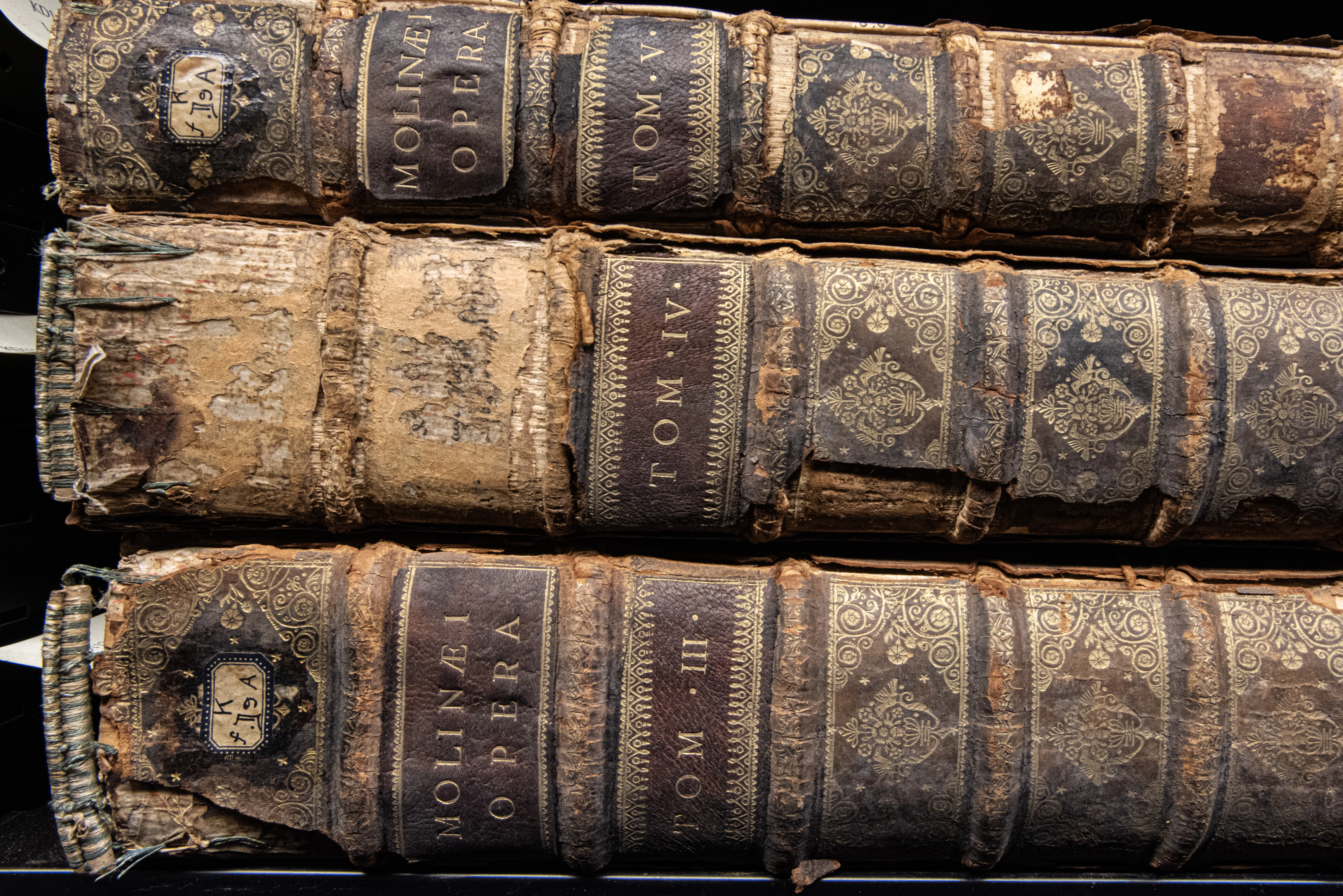
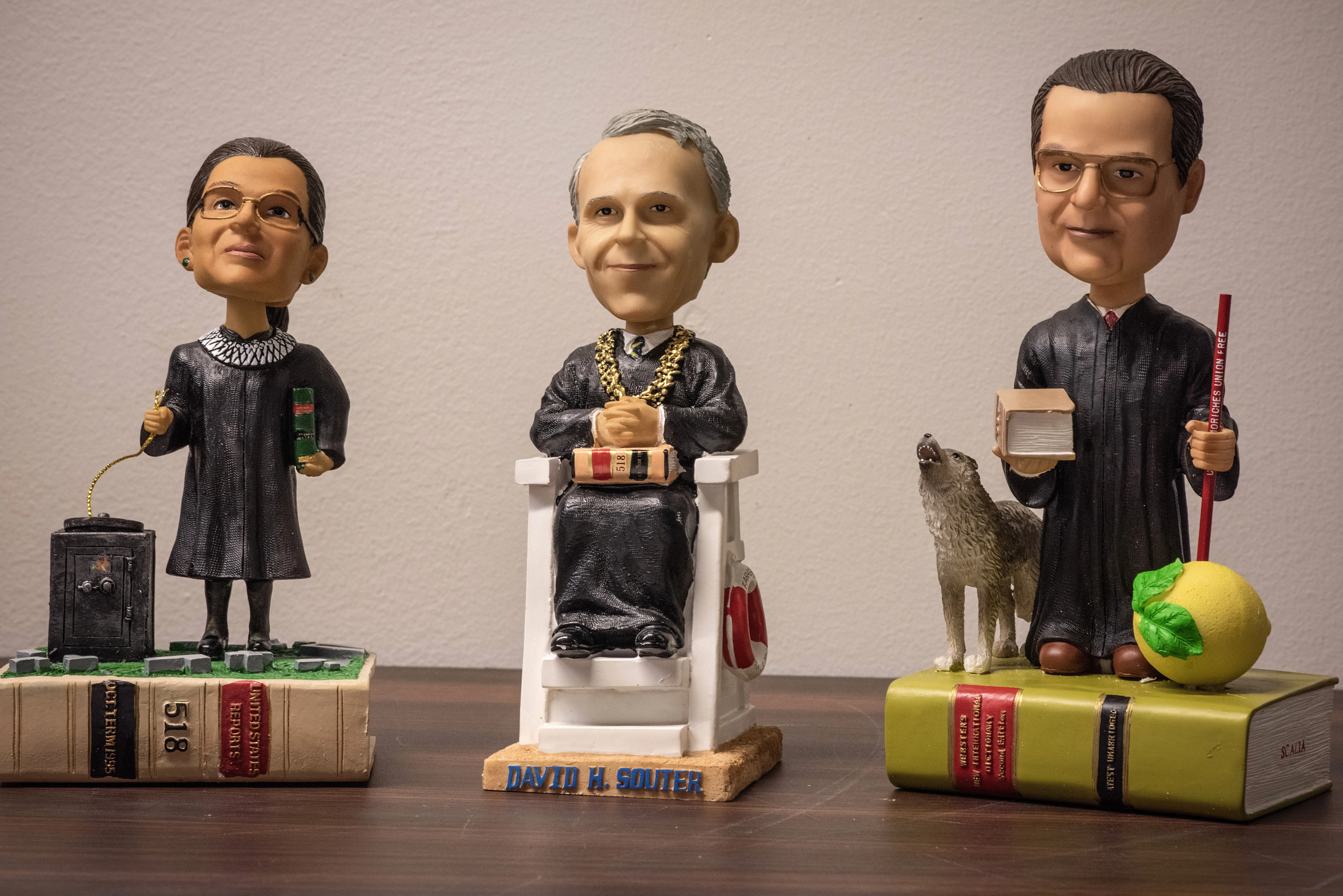
Some items are added to the collection because they serve the research needs of a faculty member. Perhaps the most prolific user of the Law School’s rare books has been Professor Helmholz, whose work on how canon law influenced common law requires many older texts. Knowing Helmholz’s interests, the staff keeps an eye out for items at auctions or in rare book catalogs that might be a fit. Some additions made especially to support his research include Decisiones Rotae and Consilia.
“They’ve been very good at buying some of the fundamental texts in my subjects, so I’ve been grateful for that,” he said.
Certain items get added because of the passion of one of the librarians. Louis-Jacques, for example, has developed a special interest in books where illustrations teach even nonlawyers about the law. An example is the Code Pénal by the early-twentieth-century cartoonist Joseph Hémard, which illustrates the French criminal code.
Finally, the library adds some new items when faculty recommend them or when alumni or friends donate them. A 2016 D’Angelo Law Library rare books narrative report stated that 5 percent of the books were gifted to the library.
Some of the quirkiest items in the Rare Book Room are neither books nor old but are sought-after legal artifacts. The room houses twenty of the limited-edition bobbleheads depicting Supreme Court justices that The Green Bag began issuing in 2003; it includes justices such as Harry A. Blackmun, William H. Rehnquist, and Ruth Bader Ginsburg, but is so far missing others, including Louis D. Brandeis and Sonia Sotomayor. (The Green Bag, a journal established by Ross Davies, ‘97, David Gossett, ‘97, and Montgomery Kosma, ‘97, is highlighted in the Spring 2005 Record.)
The Supreme Court is well represented throughout the collection. One particularly special piece is an album containing portraits and autographs of many of the early justices collected by Louis Silver and donated to the Law School Library in the late 1950s. The heavy book contains something signed by every Supreme Court Justice from John Jay to Edward Douglass White, plus signed documents from most of the justices, from White to William Howard Taft. It also features sixty signed miniature portraits of the justices by Philadelphia artists Max and Albert Rosenthal and a few photographs of later justices. (You can read more about the Silver Collection in the Spring 2017 Record.)
“It’s a one-of-a-kind collection,” Lewis said. “I anticipate and hope it always would have special value."
Although this scrapbook is a unique physical artifact, the conservation laboratory in the University’s Joe and Rika Mansueto Library has also digitized it, so even those who can’t see it in person might have a glimpse. This is one example of how librarians today balance some digitization of the collection with the preservation of the original items. A web exhibit of the collection is available online.
Stauffer is, in large part, responsible for physically caring for the books. When the library tower was last renovated, humidity and temperature controls were added because materials used to create older books, such as vellum, can easily absorb water, which will warp the books. Librarians also keep the collection away from direct sunlight.
When someone requests to see a rare book—outside researchers, not only faculty, may request access—they may use a dedicated pillow to cradle it, protecting the binding from being stressed.
As delicate as they are, Helmholz says these rare books will outlast those made today. “The old books were made out of rag paper, not wood paper,” he said. “Most books produced today will be dust at a time when the old books are still usable."
